When Satan stood on Brierley Hill
and far around it gazed,
He said, “I never more shall feel
at Hell’s fierce flames amazed.”
19th century verse
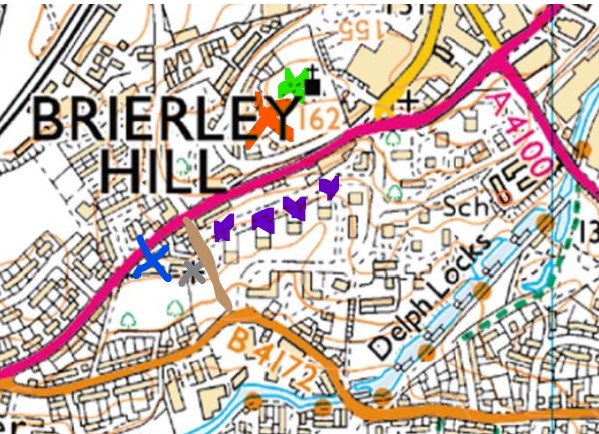
Gazing from the high point of Brierley Hill’s St Michael’s (green X) church today, the hill falls sharply down across the cemetery (orange X) to Church Street (red street) and then drops further to the Delph (orange street). High-rise flats (purple) on the Chapel Hill Estate loom across the skyline and are dotted across an area in which a triangle is bounded by Church Street / Brettell Lane (red street), the Nine Locks or Delph Locks (light blue) and the Delph leading back towards Brettell Lane at Silver End (orange street).

This basic configuration was in existence at least as far back as 1750.
A road or pathway (yellow dotted line) linked the turnpike road (later Church Street) to the Delph and a number of buildings (brown) were scattered across the area.

Not much had changed by 1835 although the yellow dotted line road between the turnpike and the Delph had developed into a more substantial roadway. This road was designated as “the road to the Delph from opposite the Whimsey Inn”, a pub that stood above at the corner of Church Street (turnpike) and North Street. This “road to the Delph” remained unnamed on both the 1841 and the 1851 census, by which time labourers, coal miners, stone miners, glass makers and puddlers had crowded into this area designated as “Derry” and/or “Brierley Hill”. The name Derry survives today as Derry Street, parallel to Church Street.
Papers at Dudley Archives refer to sales and conveyancing of pieces of land at Derry in 1851 and the area was seemingly developing fast to accommodate the workers needed to stoke the fires of industry.
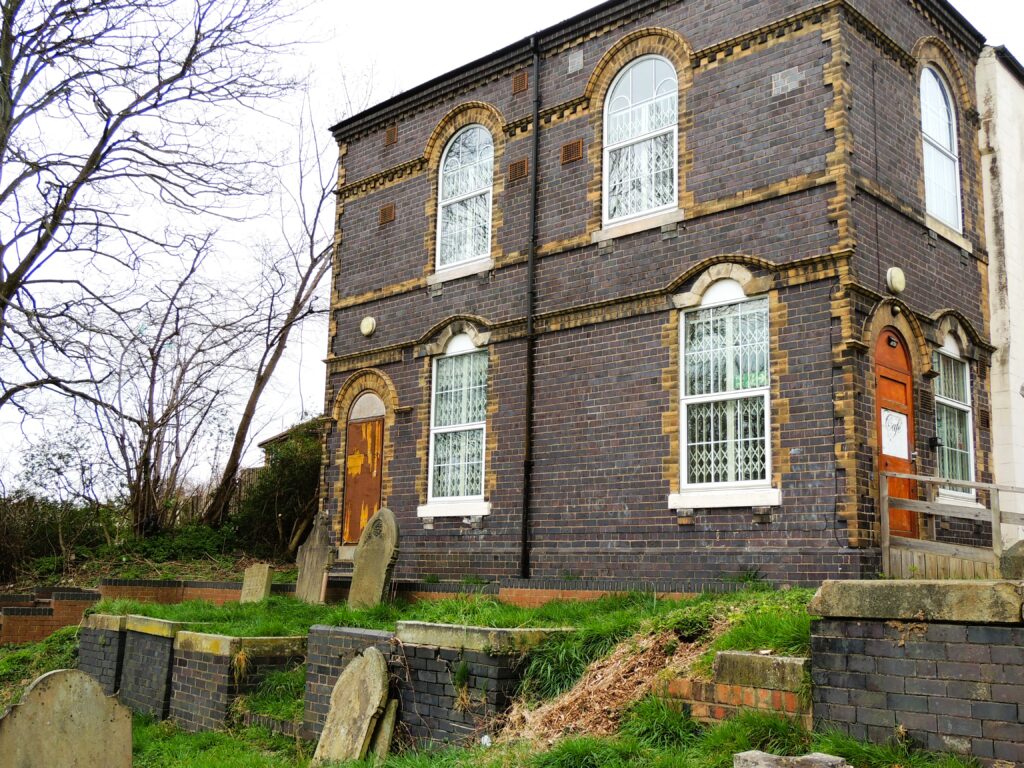
By the time of the 1861 census, the “road to the Delph” had become South Street and a Baptist Church built in 1854 stood towards the upper end at right angles to the street. A huddle of dwellings had also sprung up behind the Baptist Church and below the turnpike (Church Street) and given the delicious name of “Virgins End or South Street”.
Known locally as the “foad”, probably Black Country for “fold” – some kind of back road or yard, Virgins End remained an unmade road “of mid-19th century cottages” well into the 20th century. Inhabitants and census returns would sometimes give the address as Church Street, South Street or even Brettell Lane on official documents so that Virgins End appears to have been some kind of adopted local name never officially used on maps.
In all, an average of around 12 dwellings existed at Virgins End at various times, most of which were no longer standing by 1940. The last mention of Virgins End was in Brierley Hill Urban District Council’s electoral registrations in 1939 after which the name disappeared. Today, the cul-de-sac is a finished street called South Park Mews, a name devised when new housing was developed between 1995 and 1997.
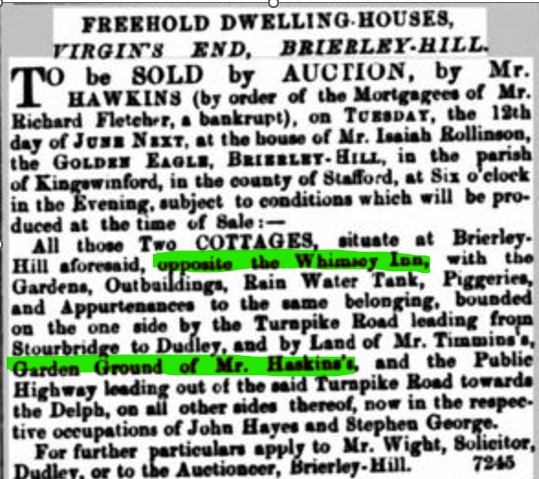
Many members of both my immediate and extended family lived for a number of generations on the streets lying between Church Street and the Delph. Virgins End itself was a particular home to my ancestors and at times the majority of families who lived on this back road appear somewhere on my extended family tree.
An examination of the community at Virgins End over a period of around 60 years reveals details of industries connected to Brierley Hill, the movement of people in and out of the Black Country and the lives that working people led.
Life must have been harsh considering factors such as precarious working conditions, poor housing, large families, unhealthy living conditions, lack of education, inadequate health care and resulting life expectancy.
It all too frequently seems to have been the case in the Black Country that basic dwellings were thrown up to house the workers required for industrialisation with little or no consideration of health issues, drainage or water. Virgins End was no exception.
Reports in the local press in 1870 referred to complaints of blood running down the road and the lack of a supply of adequate water. The sanitary committee reported that they had found “nuisances existing that must be highly detrimental to health”. Residents drew water from a well, a sample of which was sent to Queen’s College in Birmingham for analysis. The sample showed,
Great contamination by surface impurities of an animal origin. Its appearance is bad … and all its characters are such to place it under grave suspicion. It is water which ought not be used for drinking purposes.
The committee recommended closing the well and making arrangements with the South Staffordshire Waterworks Company to provide an adequate supply of water. Families had already been living in Virgins End for a number of years at this point.
1861
73 people were recorded as living at 12 dwellings with 2 houses uninhabited on the 1861 census. Assuming these dwellings were roughly the same size as those recorded in the 1911 census, each house had 2, 3 or 4 rooms with one 5 room house.
The 1861 census snapshot of the Virgins End community depicts a cross section of industrial workers then typical of Brierley Hill. 7 households were occupied by coal miners, the youngest 12 years old, and one by an unmarried mother “working on the pit bank”. The remaining were glass blowers, a bricklayer, an iron puddler and boat workers who probably worked on the canal nearby.
Families lived in cramped conditions with boarders commonly taken into households, presumably providing additional income and the means to make ends meet. Life was short and industrial accidents commonplace.
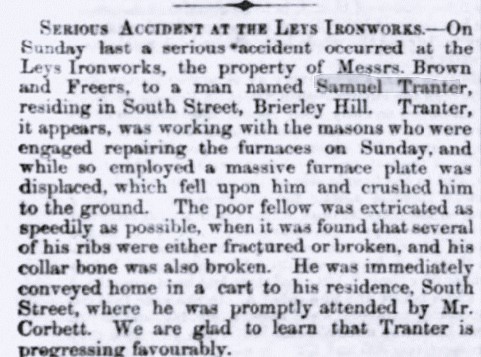
In the first half of the 19th century, my 4x great grandfather, Henry Askins, a collier, lived on Derry / Brierley Hill where he died at around the age of 60 in 1851.
His descendants, alternatively spelt with the surname Askins or Haskins, had an association with Virgins End all through its existence and the name Henry was passed through the generations, often as a middle name.
In 1861, his son Henry Askins (jnr), likewise a collier, his wife Margaret Baker and 5 children:
George Henry (12, a collier)
Matilda (8)
William (6)
Samuel Henry (4)
John Thomas (10 months)
lived in the same household at Virgins End as 3 boarders – a collier, a boatman and his wife – a total of 10 people.
Henry (jnr) lost:
his youngest son, John Thomas, at the age of 1 shortly after the 1861 census
his eldest son, George Henry, at the age of 20 in a mining accident in 1869
his wife Margaret at the age of 45 in 1871
and his daughter Matilda at the age of 20 in 1873.
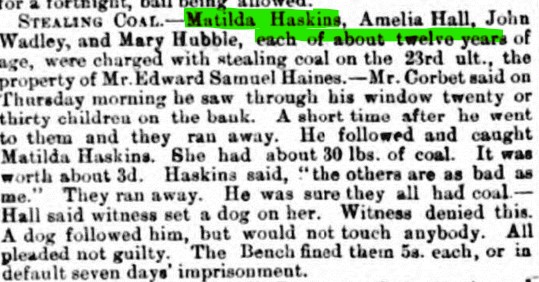
Sons William and Samuel Henry lived at Virgins End until the 1870s when they sought work in other counties, William in coal mining at Clowne in Derbyshire and Samuel Henry as a glass bottle maker in Lancashire. Samuel did return to the Black Country but died in 1891 at the age of 34.
Henry Askins (jnr) remained at Virgins End until his death in 1900.
Virgins End was also home in 1861 to Richard Pearson, another collier, his family and the sons from his wife’s first marriage, glassblowers Joseph Askins (14) and William Askins (13) and their younger brother Charles Askins (11).
Richard’s wife, Elizabeth (maiden name Norwood), was the widow of Charles Askins (snr), cousin to my 3x great grandmother, Emilia Askins. Charles Askins had been killed by injuries sustained from a fall of coal while he was working in a pit at Commonside in 1853.
Richard Pearson died in 1863 at the age of 33 and Elizabeth married for the third time in Middlesborough in 1871.
My 3x great grandparents, John Skidmore and Emilia (Askins) Skidmore, moved next door to Emila’s brother, Henry Askins (jnr), at some point between 30 July 1863, when their 5-year-old son Isaiah died of croup at Rocks Hill a street then running alongside the Nine Locks, and 14 February 1867 when Emilia died at Virgins End due to “morbus cordis (heart disease), a uretic obstruction of unknown duration and 7 days’ bronchitis”. She was 43. Her son, John, was asphyxiated in a mining accident a year later in March 1868.
John Skidmore (snr) went on to marry Emilia’s widowed sister, Sarah Ann (Askins) Wall in 1869. Sarah Ann had lived on Virgins End with her two infant daughters, Sarah and Hannah Wall, since at least the time of the 1861 census and continued to do so for the rest of her life.
1871

By the time of the 1871 census, Virgins End was recorded as running from Church Street rather than South Street.
John and Sarah Ann Skidmore were living with John’s children:
Susanna (23)
William Henry (20 – my great great grandfather)
George (18)
David (9)
and Sarah Ann’s children:
Sarah Wall (14)
Hannah Wall (11)
as well as their own infant son:
James Henry Skidmore.
Hannah Wall died at 13 of small pox at Virgins End on 1 August 1872 and John Skidmore (snr) at 54 of tongue cancer on 11 June 1879.
John Skidmore’s elder brother, Frederick Skidmore, also resided on Virgins End together with his second wife, Elizabeth Bow, and six of his thirteen children. Frederick was a labourer in an iron works as was his son Mark William and his daughters Elizabeth (16) and Jane (15) were brickmakers. Frederick died in 1873.
John Skidmore’s eldest child, Fanny Eliza Skidmore, her husband, Richard Williams and her first two daughters lived in the first house on Virgins End from Church Street.
The Williams family lived next door to my 3x great grandparents, George Pratt and Elizabeth (maiden name Harris), and their 6 children, including my great great grandmother, Sarah Pratt.
George Pratt was not a native of Brierley Hill but had grown up on the Worcestershire and Herefordshire border, working as an agricultural labourer. He moved to the Harts Hill area of Brierley Hill shortly after his marriage, a move from rural agricultural labour to urban industrial labour. After working as a carter, he too was a coal miner by the time of the 1871 census.
Other Virgins End residents at the time included the Hickman brothers, William (21) and David (25).
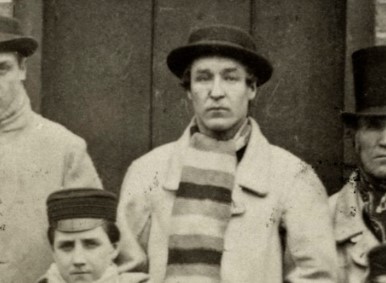
David Hickman was a coal miner at the Nine Locks colliery as was my great great grandfather, William Henry Skidmore. David was one of the survivors of the Nine Locks pit disaster in March 1869 so that there is a photograph of him taken after the pit rescue.
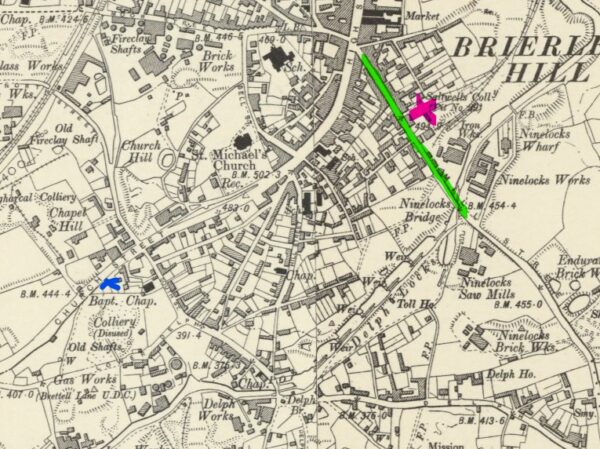
On Tuesday 16 March 1869, 10 men, 3 boys and 6 horses entered Nine Locks colliery to work overnight. At the end of the shift, the miners found they could not get to the surface as the shaft was flooded with water. Various attempts to pump out water and rescue the men and boys continued day and night over the next six days.
The miners were left damp and cold in total darkness with nothing to eat and pit water to drink for the rest of ordeal. The time was spent sleeping, singing hymns, praying or relieving hunger by chewing on the tongue of a leather boot, leather straps or coal. On the second day, one of the miners, William Ashmore (50) seemed to “wander in his mind”, went mad, tore off his clothes and left the others. Other miners had hallucinations imagining they were in other places or seeing sunrise when they woke.
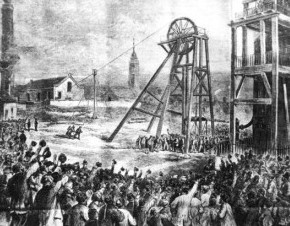
March 1869
By Saturday night, hundreds of people had gathered around the pit located on Mill Street in Brierley Hill to watch and wait. At about three in the morning, a voice was heard from the pit stating that the men were “all right”. This spurred on the rescue workers. The water dropped and a raft was sent down into the mine. The first miners to be found and brought to the surface were David Hickman, Timothy Taylor and a 14 year old boy, Thomas Sankey.
66 people lived in 11 dwellings on Virgins End in 1871. The households were predominately those of coal mining families. My great great grandfather’s brother, David Skidmore, was the youngest recorded miner at 9 years of age.

Sarah Pratt married William Henry Skidmore in 1873 and their daughter, Alice Skidmore, my great grandmother, was born on 9 April 1877, the second of 6 children known to the marriage. Alice’s younger sister, Harriet, died of scarlet fever at Virgins End at the age of 4 on 14 January 1884.
The local press subsequently reported that scarlet fever prevailed at Virgins End and that affected houses required limewashing, were generally in dilapidated condition and the attention of the landlord, Mr Timmins, at Virgins End should be drawn to this.
Another brief insight into the lives of my great great grandparents exists since they were both brought in front of the magistrates’ bench in June 1882, charged with assault and committing a breach of the peace at Virgins End on 23 May. My great great grandfather, William H Skidmore, confronted Enoch Ellerton, another coal miner, who was walking up Church Street with his future wife, Sarah Fradgley.
William seized Enoch by the collar and demanded money he claimed Enoch owed him from losing a pigeon flying match. When Enoch insisted he had no money, William began to hit him and another man called Henry Price joined in the assault. This developed into quite a brawl involving Sarah’s father, Elijah Fradgley, and a fight between Caroline Bedford, a brickmaker, and my great great grandmother, Sarah (Pratt) Skidmore. As all the details of the brawl seemed to have been difficult to establish, fines were just handed out to my great great grandfather (10s plus costs) and Henry Price (5s plus costs) while the other cases were dismissed.
Fighting and drunkeness were misdemeanours that were commonly fined and reported in the local press.
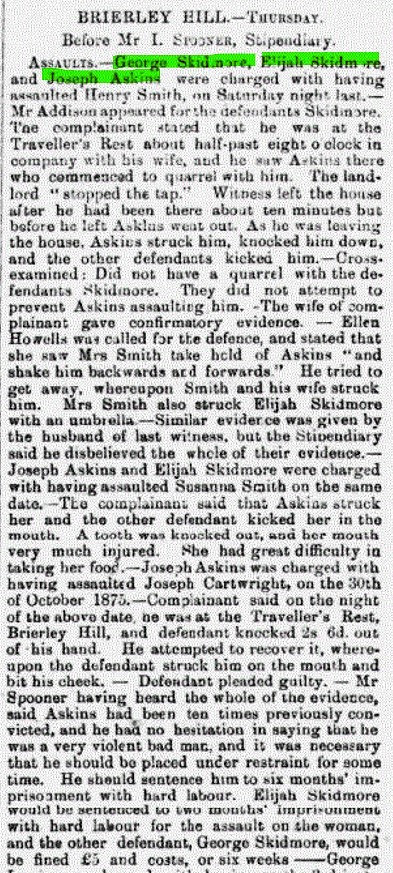
Frequent fines were also given by the School Board to parents refusing or neglecting to send their children to school.
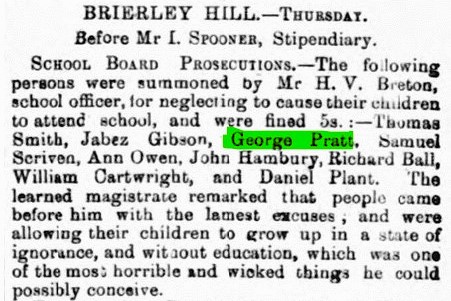
George Pratt was fined in both 1875 and 1877. It has been difficult to ascertain exactly why George was in Stafford prison at the time of the 1881 census but it may have been a result of repeated offences against the School Board.
Charles Fradgley (cousin to Sarah Fradgley in the brawling incident above) was fined for the same offence in 1881 as was Joseph Askins in March and April 1881.
In February 1888, it was reported that Henry Haskins’ dog ran after the school attendance officer when he came to Virgins End. The dog bit the officer’s leg so that a doctor had to examine and dress the leg. This may have not been too an unwelcome occurrence amongst the inhabitants of Virgins End, but Henry Haskins was charged with having a dangerous dog, ordered to pay costs and have the dog destroyed.
1881
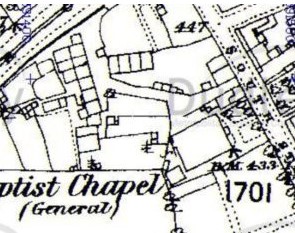
The 1881 census listed the following 83 people at Virgins End, designated “Brettell Lane Virgins End”.
The predominance of coal miners had diminished whilst the number of workers in brick making, bottle manufacturing and iron working had increased, maybe reflecting the development of certain industries in the area. Children were not registered as working at such an early age as twenty years previously but both girls and boys were labouring by the time they were 14 or 15.
1.
Elizabeth Skidmore (57 – widow of Frederick Skidmore, brother of my 3x great grandfather John Skidmore)
daughter Jane (25) pottery girl
son Frederick (22) iron moulder
son George (16) labourer
son Daniel (15) iron worker.
George emigrated to the United States in 1887 and settled in Mahoning County, Ohio. He married Sarah Jane Collins in 1889 and worked as a puddler and then as a janitor at the Youngstown Sheet & Tube company.
2.
Henry Haskins (56 – widower, brother of my 3x great grandmother Emilia Askins) labourer
daughter Sarah Jane (18)
Harriet (15) brickyard assistant.
3.
Sarah Ann (Askins, Wall) Skidmore (51 – widow of John Skidmore, my 3x great grandfather)
son David (19) glass bottle maker
son James (11)
daughter Sarah (Wall) Barber (23)
Sarah lived to the age of 90 and is buried at South Street Baptist Church in the same plot as her husband James Barber who died in 1916.
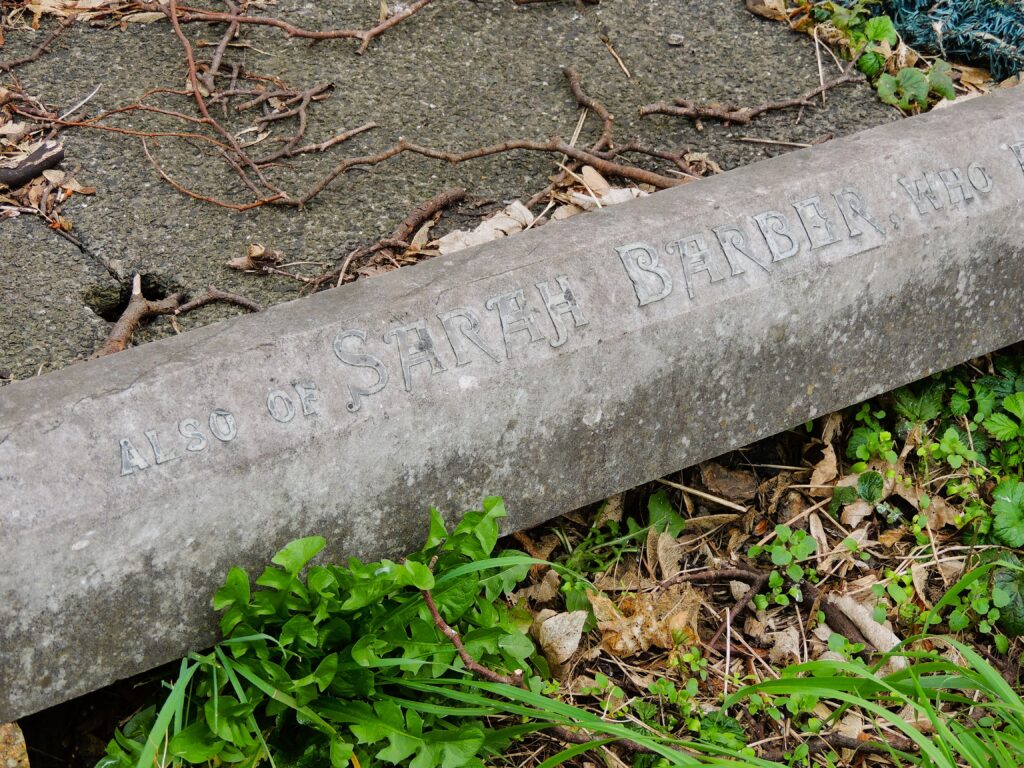
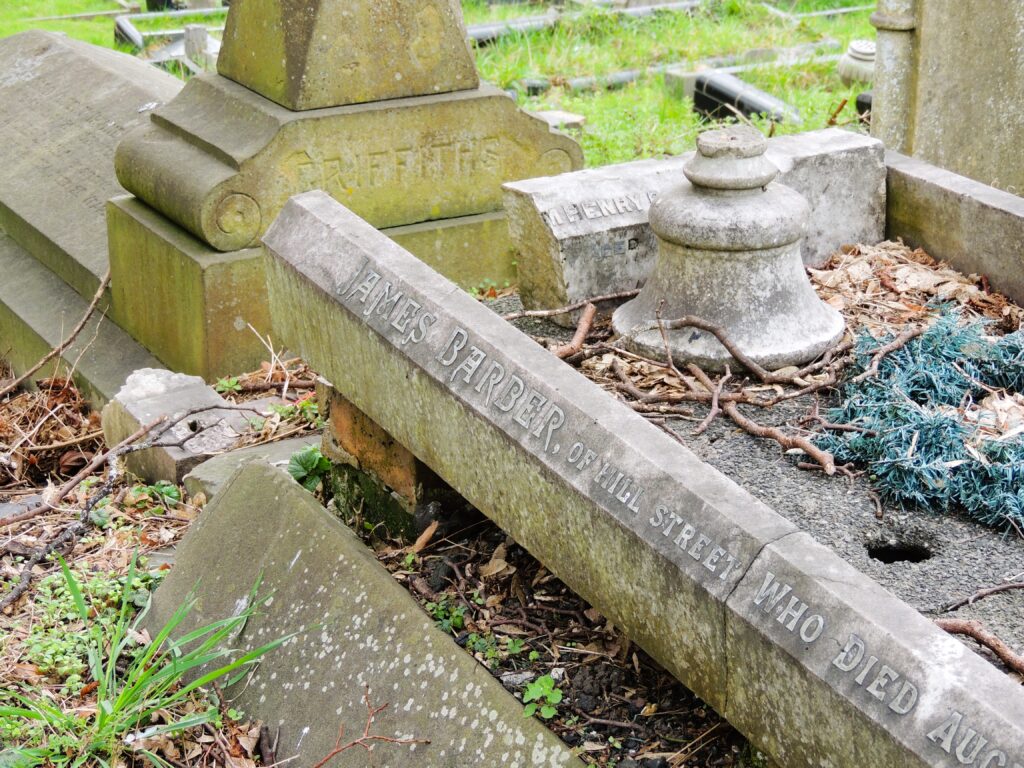
son-in-law James Barber (24) bricklayer
grandson Charles Alfred Barber (2)
granddaughter Edith Barber (5 months).
4.
Henry Haskins (39 – cousin of my great great grandfather William Henry Skidmore) coal miner
wife Martha (Barnbrooks) Haskins (43)
daughter Ann Maria (18) brickyard assistant
daughter Sarah (16) brickyard assistant
daughter Matilda (12)
daughter Alice (5)
daughter Hannah (3)
nephew William (13).
5.
not in my family tree
Edward Green (32) – born in Bilston, iron worker
wife Mary Ann (31)
daughters Alice (11)
Elizabeth (9)
Mary Ann (5)
Phoebe Ann (3)
Mary Jane (1)
son Edward (6 months).
6.
Joseph Askins (35 – son of cousin of 3x great grandmother Emilia Askins) coal miner
wife Eliza (Chapell) (33)
son Charles (13)
daughter Louisa (10)
daughter Maria (4)
daughter Emily (1)
lodgers
Maria Oliver (45 – born in Ludlow)
Walter Oliver (12) blind from a fever
Ann Oliver (5).
7.
distant relative by marriage
David Hickman (35) coal miner
wife Hannah (Thatcher) (37)
daughters Priscilla (15)
Susannah (12)
Ruth (8)
Hannah (2).
8.
distant relative by marriage
George Herrington (36) brewer
wife Harriet (Pegg) (34)
son Joseph (16) bottle works assistant
daughter Mary (10)
daughter Maria (5)
son William (3)
son Richard (11 months)
father John (66) bottle works assistant (died Virgins End, 23 January 1888 aged 74 – chronic bronchitis and asthma)
mother Sarah (Whittaker) (69).
9.
Richard Williams (36 – brother-in-law to my great great grandfather William Henry Skidmore) painter’s labourer
wife Fanny (Skidmore) (35 – my great great grandfather’s sister)
daughter Jane (13)
daughter Elizabeth (12)
son John (9)
son George (7)
daughter Sarah (3)
son Edward (1).
10.
not in my family tree
Charles Fradgley (39) blast furnace man
wife Margaret Oseland (Ward) (36)
sons Frederick George (14) iron works assistant
John Francis (14) iron works assistant
Joseph Richard (11) (died Virgins End, 13 August 1889 aged 20)
David Arthur (9)
James Edwin (7)
Elijah (5)
son Henry (1).
11.
William Henry Skidmore (32 – my great great grandfather) coal miner
wife Sarah (Pratt) (29 – my great great grandmother)
daughters Alice (3 – my great grandmother)
Harriet (1).
12.
distant relative by marriage
David Skelding (53) brickyard labourer
wife Maria (Share) (49)
son William (16) iron worker
daughter Augusta (13).

13.
does not appear in my family tree
William Stockholm (66 – widower) brickyard labourer
daughter Julia (33)
lodger John Miller (69 – widower) labourer.
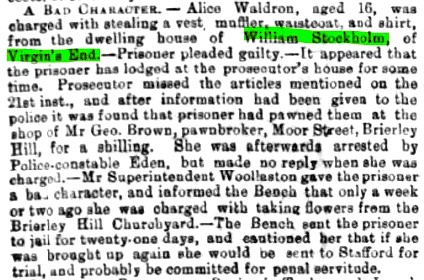
The death of children at Virgins End was a regular occurrence:
Harriet Skidmore died of scarlet fever aged 4 in 1884.
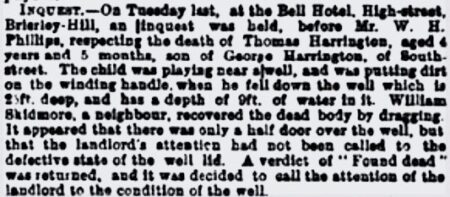
Thomas Herrington, the 4 year old son of George Herrington, fell into a well on 13 April 1886 and my great great grandfather, William Skidmore, recovered his dead body.
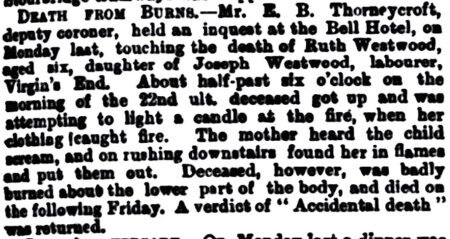
Ruth Westwood died of burns aged 6 on 24 December 1886.
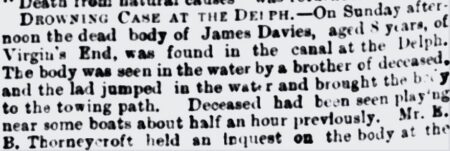
James Davies drowned in the canal aged 8 on 13 August 1887.
Henry Bradley, an infant, died on 12 November 1887.
Mary Ann Fradgley died aged 7 on 17 August 1889.
The local newspaper reported that 3 cases of typhoid fever at Virgins End were treated with disinfectants in the absence of any hospital for such cases in 1889.
1891
In 1891, Virgins End was recorded as its own entity and not as a part of South Street, Church Street or Brettell Lane. The dwellings were also numbered for the first time although 3 houses were unnumbered.
George Herrington still resided at number 1 in the 1911 census which is listed as the one 5 room house so that it could be assumed that number 1 starts from the south as this appears to the be the largest house on maps.
My immediate relatives had moved to accommodation in neighbouring streets such as South Street and Bull Street at Silver End.
The 1891 census recorded the following inhabitants:
3 unnumbered houses:
a.
George H Bayton (25) ironworks
wife Elizabeth (Pratt) (22 – sister of my great great grandmother Sarah Pratt)
son Joseph William (3)
George Henry (3 mths)
b.
Charles Fradgley (49) labourer at blast furnace
wife Margaret (Oseland Ward) (46)
sons Frederick (26) labourer in iron works
David (19) iron works
Edwin (17) iron works
Elijah (15) ? works
Harry (11)
daughter Emma (6)
c.
John Westwood (25) coal miner (son of Joseph Westwood and Eliza Brettell, Number 4)
wife (Anne) Maria (Askins) (20) (daughter of Henry and Martha Askins, Number 8)
son Samuel (6)
daughter Matilda (3)
daughter Edith (1)
Number 1.
George Herrington (36) brewer
wife Harriet (Pegg) (44) (died Virgins End, 19 March 1895 aged 51 – mitral regurgitation, ascites)
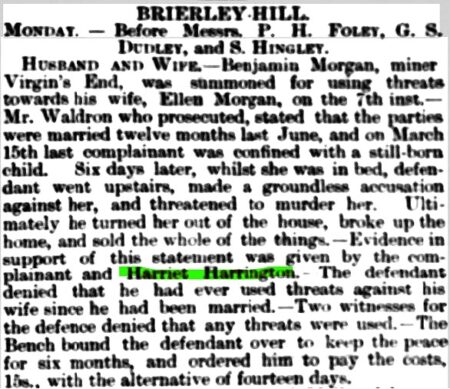
daughter Maria (15)
son William (13)
son Richard (11)
daughter Hannah (4)
son-in-law John Timmins (24) lime burner
daughter Mary Timmins (20)
granddaughter Harriet Timmins (2)
mother Sarah (Whittaker) (78) widow (died Virgins End, 9 March 1896 aged 82 – senile decay).
Number 2.
Uninhabited.
Number 3.
distant relative by marriage
David Barnbrook (39 ) coal miner
wife Sarah Jane (Mills) (38)
daughter Mary Ann (11)
son Alfred (8)
son Jabez (6)
son David (2).
Number 4.
distant relative by marriage
Joseph Westwood (51) labourer in iron works
wife Eliza (Brettell) (50)
son Daniel (20) labourer in bottle house
son Shadrach (18) labourer boat loader
son Levi (15) coal miner
daughter Elizabeth (13)
son Noah (7).
Number 5.
Daniel Skidmore (25 – cousin to great great grandfather William Henry Skidmore, brother of Elijah at Number 10) coal miner
wife Augusta (Skelding) (23) (daughter David Skelding Number 9)
son Arthur (9 months) – emigrated to USA in 1910.
Number 6.
Sarah Ann (Askins, Wall) Skidmore (60 – widow of 3x great grandfather John Skidmore) charwoman
Henry Wright (18) boarder, blast furnace man.
Number 7.
Henry Haskins (66 – widower, brother of my 3x great grandmother Emilia Askins)
daughter Sarah Jane (28)
granddaughter Margaret Askins (4).
Number 8.
Henry Haskins (49 – cousin of my great great grandfather William Henry Skidmore) coal miner
wife Martha (Barnbrooks) Haskins (53)
daughters Susannah (23) brickmaker
Emma (16) brickmaker
Alice (15)
Hannah (13).
Number 9.
distant relative by marriage
David Skelding (63) bricklayer’s labourer
wife Maria (Share) (59).
Number 10.
Elijah Skidmore (35 – cousin to great great grandfather William Henry Skidmore, brother of Daniel at Number 5) coal miner
(3rd) wife Ann (Wheeler) (37)
son Obadiah (10)
daughter Annie (8).
Number 11.
Uninhabited.
1901
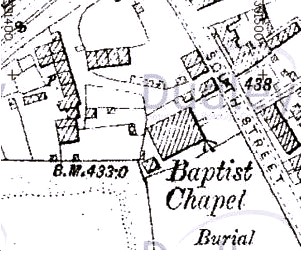
The 1901 census continued to number the houses at Virgins End but four houses without numbers. 1-12 could be the houses on the left on the map running from south to north and the additional 4 houses those running from west to east.
Askins descendants continued to represent a fair proportion of the community.
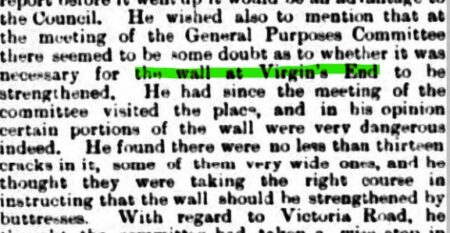
Number 1.
George Herrington (56) general labourer
son William (23) iron worker
son Richard (20) clay miner
daughter Hannah (14)
grandson George Timmins (12).
Number 2.
Joseph Pegg Herrington (35, son of George at Number 1) general labourer
wife Jane (Timmins) (32)
daughter Naomi (10)
sons David (8)
Joseph (5)
Wilfred (3)
Thomas (1).
Number 3.
John William Hickman (28) clay miner
wife Maud (29)
daughter Elizabeth (6)
sons John W (4)
Alfred (2)
Walter (3 months).
Number 4.
David Barnbrooks (54 – brother of Martha, wife of Henry Haskins) labourer
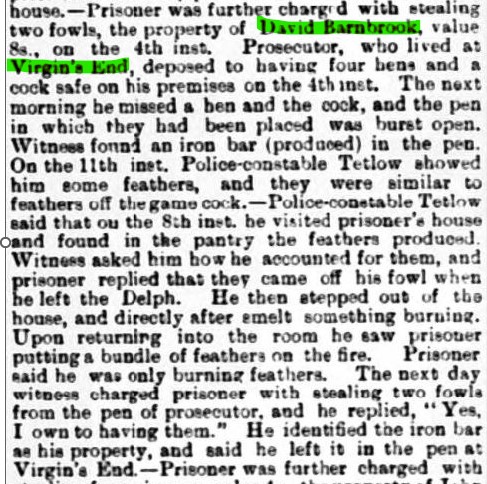
wife Sarah Jane (Mills)
sons Alfred (19) miner
William (16)
David (12)
daughters Sarah Jane (7)
Elizabeth (4).
Number 5.
William Askins (33 – nephew living in the household of Henry Askins in 1881) coal miner
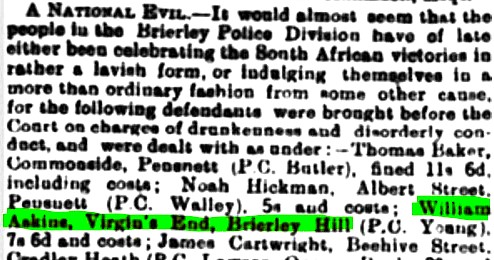

wife Eliza (Bradley) (32)
son Samuel Henry (13)
daughter Annie (11)
son William (7)
son John David (8)
daughter Eliza (2).
Number 6.
not on census.
Number 7.
William Currell (38) labourer
wife Harriet (Askins) (37 – daughter Henry Askins, Number 8) brick moulder
son Frederick (12)
daughter Mary Ann (9)
daughter Lizzie (7)
son William (4).
Number 8.
Henry Haskins (59 – cousin of my great great grandfather William Henry Skidmore) clay miner
wife Martha (Barnbrooks) Haskins (63)
son-in-law Henry Trueman (29) pickler spice (?)
daughter Alice (Askins) Trueman (25)
son-in-law William Shaw (25) coal miner – hewer
daughter Hannah (Askins) Shaw (23) brick moulder
grandchildren Henry Bradley (12 – child of Henry’s daughter Sarah)
Vernon Trueman (6)
William Trueman (4)
Elizabeth Shaw (2)
Margaret Trueman (1)
Margaret Shaw (11 months).
Number 9.
Rebecca (Skidmore) Griffiths (56 – cousin of my great great grandfather William Henry Skidmore and sister of Elijah Skidmore at Number 10) widow
daughter Nellie (20) French polisher
son Thomas (18) coal miner
son John (16) coal miner
granddaughter Alice Maud Kendrick (1).
Number 10.
Elijah Skidmore (45 – cousin of great great grandfather William Henry Skidmore and sister of Rebecca at Number 9) coal miner – hewer
(3rd) wife Ann (Wheeler) (46)
son Obadiah (20) glazed tile worker
daughter Annie (18) French polisher
son Samuel (7).
Number 11.
not on census.
Number 12.
Elijah Barnbrooks (36 – brother-in-law to Henry Askins Number 8, brother of Martha) clay miner
wife Anne (Haines) (36)
son Joseph (9)
daughters Phoebe (7)
Eliza (5)
Annie Lizzie (1)
Additional 4 houses:
a.
Joseph Batham (37) coal miner – hewer

wife Mary (Male) (40)
daughter Violette (15)
daughter Lizzie (13)
son William (12)
daughter Jane (10)
daughter Florence (8)
daughter Alice (5).
b.
John Henry Brooks (24) stoker at stationery boiler
Wife Mary Ann (Barnbrooks) (21 – daughter of David Barnbrooks at Number 4)
son John Henry (2 months)
boarders Sarah Ann (Askins, Wall) Skidmore (69 – widow of 3x great grandfather John Skidmore) and her granddaughter Gertrude Barber (10).
c.
Charles Fradgley (59 – widower) general labourer
sons Edwin (27) furnace man
Elijah (25) general labourer
Henry (21) mill worker
daughter Emma (16) housemaid.
d.
Mary A Round (51 – widow)
Boarder James Bate (66) watchman
son Matthew (20) labourer
son Edward (17) labourer
daughter Maria (15).
1911
Brick making, clay and coal mining were dominant occupations on the 1911 census. This census gave more details as to years of marriage, number of children born to the marriage, children who had died and the size of dwelling.
11 women declared they had given birth to 66 children and 22 had died. Admittedly, a proportion of these deaths might have occurred after childhood but the death rate is nevertheless 33%. Child mortality could well have been even higher in previous decades considering that unknown births and deaths must have occurred between the census dates. Women seem to have had particularly hard lives with little or no education, labouring long hours at back breaking jobs such as brickmaking, marrying early and seemingly often giving birth to one child after another.
Lives could be short. My 3x great grandmother, Emilia Askins, died at 43 after having 7 known children and my great great grandmother, Sarah Pratt, at 40 after giving birth to 6 known children.
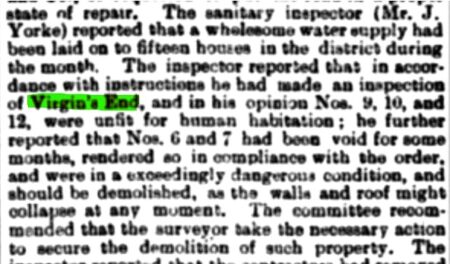
In February 1904, the sanitary inspector reported that numbers 9, 10 and 12 were unfit for human habitation and numbers 6 and 7 were in a dangerous condition. The sanitary and general purposes committee recommended the properties be demolished.
They were still occupied in 1911 however.
The residents of Virgins End in 1911 were:
Number 1.
5 rooms.
George Herrington (67 – widower) fire brick works labourer
Unnumbered House.
3 rooms.
William Shaw (35) coal miner underground
wife Hannah (Askins) (33, daughter of Henry and Martha Askins, sister to Maria, No 5, Matilda No. 7 and Alice no. 9) (had 5 children, none of whom had died)
daughter Charlotte Elizabeth (12)
daughter Margaret (11)
son Ernest (7)
daughter Dorothy (4)
daughter Rose Maud (2).
Number 2.
4 rooms.
Joseph Pegg Herrington (23, son of George at Number 1) fire-brick labourer
wife Jane (Timmins) (23) (had 10 children, one of whom had died)
sons George (23) printer
David (18) apprentice flint glass worker
Joseph (16) apprentice flint glass worker
Wilfred (13)
Thomas (11)
Richard (8)
Charles (5)
Frederick (3).
Number 3.
2 rooms.
Edward Bayliss (53 – born Warwickshire) domestic gardener
wife Sarah Mary (51 – born Gloucestershire).
Number 4.
2 rooms.
Joseph Skidmore (37 – son of cousin of great great grandfather, William Henry Skidmore) clay miner underground
wife Mary Elizabeth (Oldnall) (35) (had 4 children, 1 of whom had died)
son Isaiah (13)
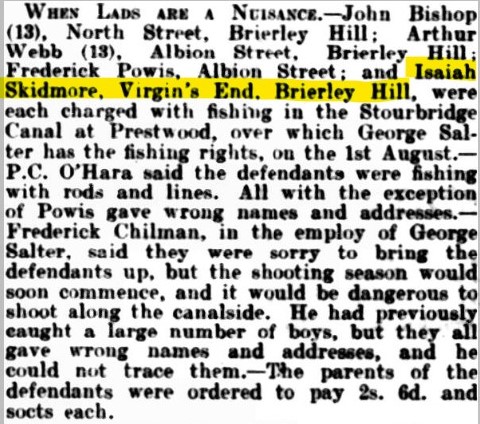
daughter Martha Alice (4).
Number 5.
3 rooms.
John Westwood (47) timber yard labourer
wife (Anne) Maria (Askins) (50, daughter of Henry and Martha Askins, sister to Hannah unnumbered above, Matilda No. 7 and Alice no. 9) (born on Virgins End) (had 9 children, 3 of whom had died)
daughter Ruth (22) brick yard labourer
son Thomas (19) labourer on Great Western railway
son Shadrach (13) later a private in the South Staffordshire Regiment during World War 1, Shadrach worked at glassmakers Stevens and Williams on North Street as a glass blower and featured in the 1961 BBC Documentary “The Crystal Makers”.
son John (10)
father Joseph Westwood (73) horse driver in timber yard.
Number 6.
4 rooms.
Richard Strain (50 – born Warwickshire, does not appear on my family tree) brickyard labourer
wife Mary Ann (Cook) (20 – born Solihull) (had 2 children, none of whom had died)
daughter Mary ( 13)
son Albert (18) horse driver underground.
Number 7.
4 rooms.
Thomas Shakespeare (41) miner – loader underground
wife Matilda (Askins) (41, daughter of Henry and Martha Askins, sister to Hannah unnumbered above, Maria at no.5 and Alice no. 9) (born on Virgins End) housekeeper at home, (had 4 children, 1 of whom had died)
daughters Hannah (18) brickyard labourer
Kate (15) labourer holloware in bucket factory
Maud (6).
Number 8.
Samuel Westwood (26 – son John Westwood no. 5) colliery horse keeper below ground
wife Rose (Evans) (26) housekeeper at home (had 3 children, none of whom had died)
daughter Minnie (5)
daughter Hannah (3)
son Samuel (1)
boarder Jane Batham (20, residing at Virgins End in 1901) brickyard labourer – fire clay work.
Number 9.
3 rooms.
Henry Truman (41) timber yard labourer
Wife Alice (Askins) (38 – daughter of Henry and Martha Askins, sister to Hannah unnumbered above, Maria at no.5 and Matilda no. 7) (born on Virgins End) housekeeper at home (had 6 children, 2 of whom had died)
sons Vernon (16) brickyard labourer
William (14)
Frank (5)
Henry (2).
Number 10.
3 rooms.
Alice (Wheeler) Skidmore (57 – widow of Elijah Skidmore, cousin of great great grandfather William Henry Skidmore) charing (had 4 children, 1 of whom had died)
son Samuel (17) fish hawker.
Number 12 cottage.
2 rooms.
John Head (62) caretaker / warehouseman public market
wife Sarah (Pocock) (61) (had 9 children, 7 of whom had died).
Unnumbered House.
4 rooms.
Elijah Barnbrook (51, brother-in-law to Henry Askins, brother of Martha) coal miner – hewer
wife Annie (Haines) housekeeper at home (had 10 children, 6 of whom had died)
son Joseph (19) colliery horsekeeper below ground
daughter Phoebe (17) day girl in brickyard
daughter Eliza (15)
daughter Lizzie (11)
boarder George Haines (67, widower) labourer above ground in colliery.
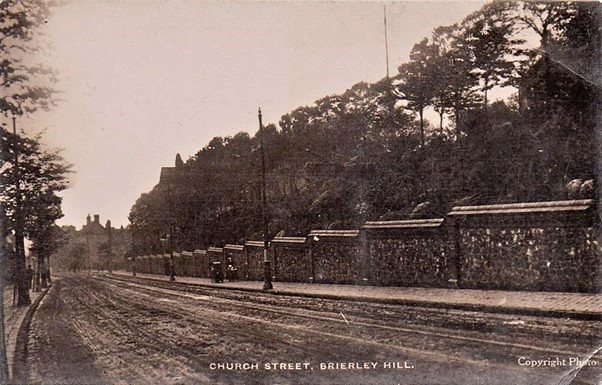
1921
The 1921 census recorded employers’ names and addresses.
1.
3 people, 2 rooms
brother-in-law to Henry Askins, brother of Martha
Elijah Barnbrook (60 yrs 6 mths), a general labourer on the tramway for Birmingham tramways
wife, Annie (Haines) (48 yrs 10 mths)
daughter, Lizzie, (21 yrs 2 mths), a setter’s labourer at John Hall Firebricks Works, Amblecote Road, Stourbridge
2.
8 people, 3 rooms
Samuel Westwood (36 yrs 8 mths), a coal miner (holer), Bentleys & Co Coal Company, Mill Street, Brierley Hill
wife Rose (Evans) (36)
daughter Minnie (15 yrs 7 mths), enamel worker in holloware works, Stevens & Williams, Cradley Heath
daughter Hannah (13 yrs 8 mths)
son Samuel (11 yrs 9 mths)
daughter Susannah (7 yrs 6 mths)
daughter Eliza (5 yrs 2 mths)
daughter Rose (2 mths)
3.
6 people, 3 rooms
Thomas Shakespeare (52 yrs 3 mths), coal loader in coal mine, Stourbridge Glaze Brick Company, Fenn & Clark
wife Matilda (Askins) (51 yrs 10 mths), moulder in brick yard, Harris & Pearson
son-in-law, George Philpott, (26 yrs 5 mths), blast furnace man, Earl of Dudley, Round Oak pig iron manufacturers
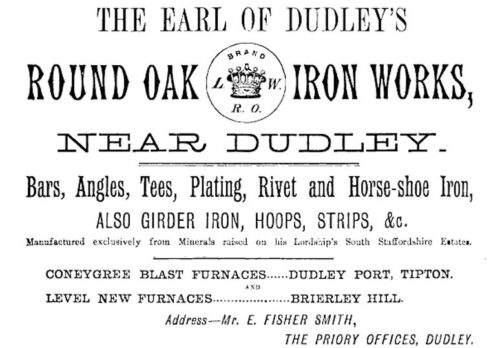
daughter Kate Philpott (25 yrs 4mths)
daughter Maud (16 yrs 8 mths), carrier off in brick yard, Harris & Pearson
4.
2 people, 3 rooms
Richard Strain (60 yrs), labourer Quarry Bank Urban District Council
wife Mary Ann (Cook) (64 yrs)
5.
11 people, 4 rooms
William Shaw (45 yrs 11 mths) out of work railway labourer, F A Brown Railway Contractor, Stourbridge
wife Hannah (Askins) (43 yrs 7 mths)
daughter Margaret (21 yrs 2 mths), brick yard labourer, Trotter Haines & Corbett brick manufacturers, Brettell Lane
son Ernest (18 yrs), out of work horse driver, Bentley Bros Colliery Proprietors, Mill Street, Brierley Hill
daughter Dorothy (14 yrs 7 mths), just left school
daughter Rose Anna (11 yrs 11 mths)
son William V (5 yrs 1 mth)
son Joseph (1 yr 7 mths)
daughter Charlotte E Fairley (22 yrs 6 mths)
son-in-law Samuel Fairley (27 yrs 8 mths) out of work horse driver, J Bradley Colliery, Pensnett
grandson Samuel W Fairley (10 mths)
6.
not in family tree
5 people, 3 rooms
Thomas Batham (50 yrs) out of work coal miner – hewer, Harris & Pearson
daughter Mary (19 yrs 9 mths)
daughter Annie (17 yrs 6 mths), out of work labourer in fire brick works, E J & J Pearson, Delph, Brierley Hill
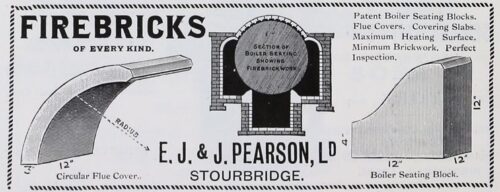
granddaughter Mary Ann Batham (3 yrs 8 mths) father dead, born Yorkshire
grandson Fred Batham (1 yr 4 mths)) father dead, born Yorkshire
7.
not in family tree
4 people, 3 rooms
Benjamin William Cook (34 yrs) mill labourer, Earl of Dudley Round Oak Works, iron and steel rolling mills
wife Martha Alice (Higgs) (27 yrs)
daughter Mary (3 yrs 1 mth)
son William Samuel Thomas (1yr 5 mths)
8.
4 people, 2 rooms
William Herrington (43 yrs 4 mths) iron puddler, Robert & Cooper Iron Rolling Mills, Brettell Lane
wife Abigail (Haines) (45 yrs)
daughter Harriet (17 yrs 8 mths)
daughter Phoebe May (7 yrs 3 mths)
no number 9 or 10.
11.
6 people, 2 rooms
Henry Truman (52 yrs) pickler in holloware, Rhodes & Cartwright Galvaniser & Holloware, Cradley Heath
wife Alice (Askins) (46 yrs 1 mth)
son William E Truman (25 yrs 6 mths), out of work brick yard labourer, George King Harrison fire bricks works, Brettell Lane
son Frank (15 yrs 2 mths) out of work labourer in flint glass works, Bolton & Bowwater glass manufacturers, Ambelcote
son Henry (12 yrs 5 mths)
daughter Louisa (9 yrs 6 mths)
13.
2 people, 2 rooms
John Head (72 yrs) old age pensioner
wife Sarah (Pocock) (70 yrs 6 mths)
1939

The last mentions of Virgins End in 1938 and 1939 recorded that there were seven houses. Four of these were registered as 1,2,3 and 4 Court C (South Street on 1939 register) and the others were named Sunnydale, Villa Rose and Frances Villa (Church Street on 1939 register).
Thomas Shakespeare and his wife Matilda Askins were the only remaining residents from the 1911 census, living at No 3 Court C as old age pensioners, meaning that some member of the Askins family resided at Virgins End for the whole of its existence.
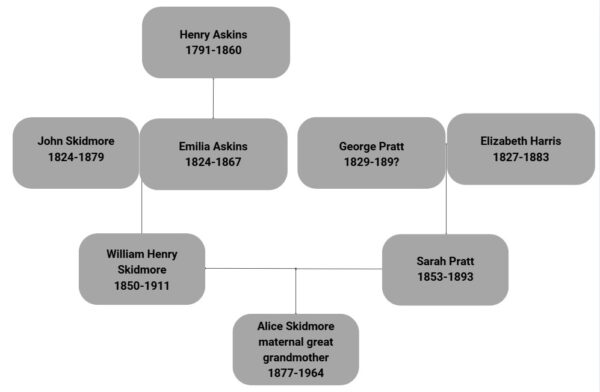
Other recurring names are that of Barnbrook – Annie Barnbrook was at no 1 Court C, and Fradgley – Sidney Fradgley and his wife Edith Slevin were at Villa Rose.
Today
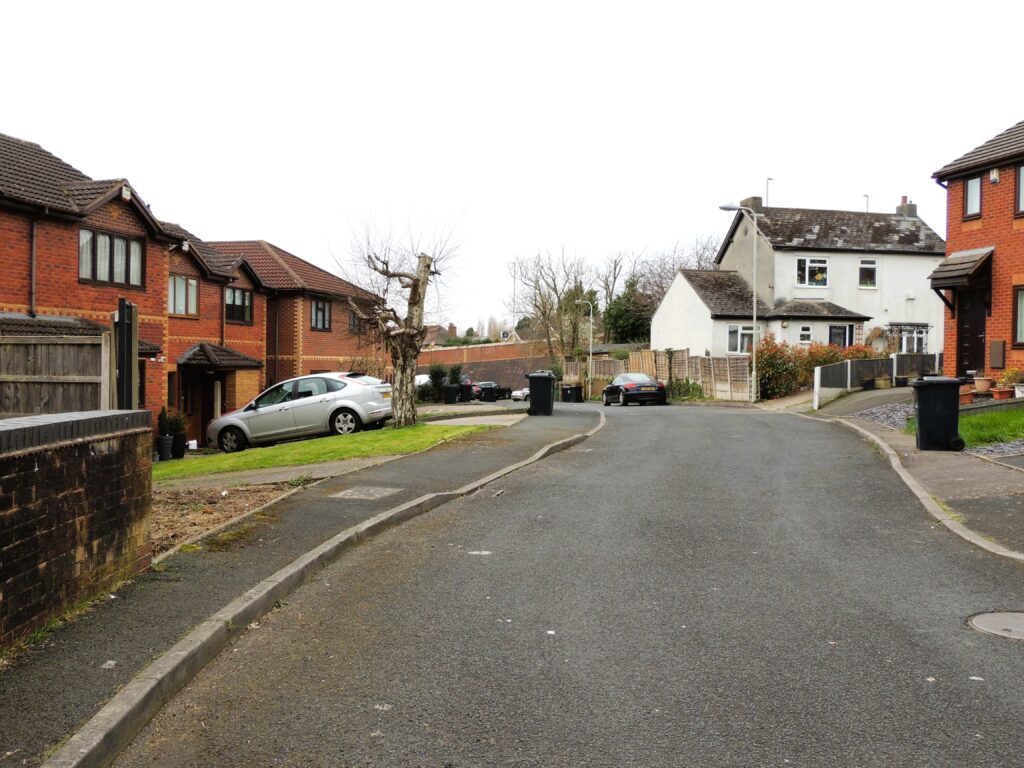
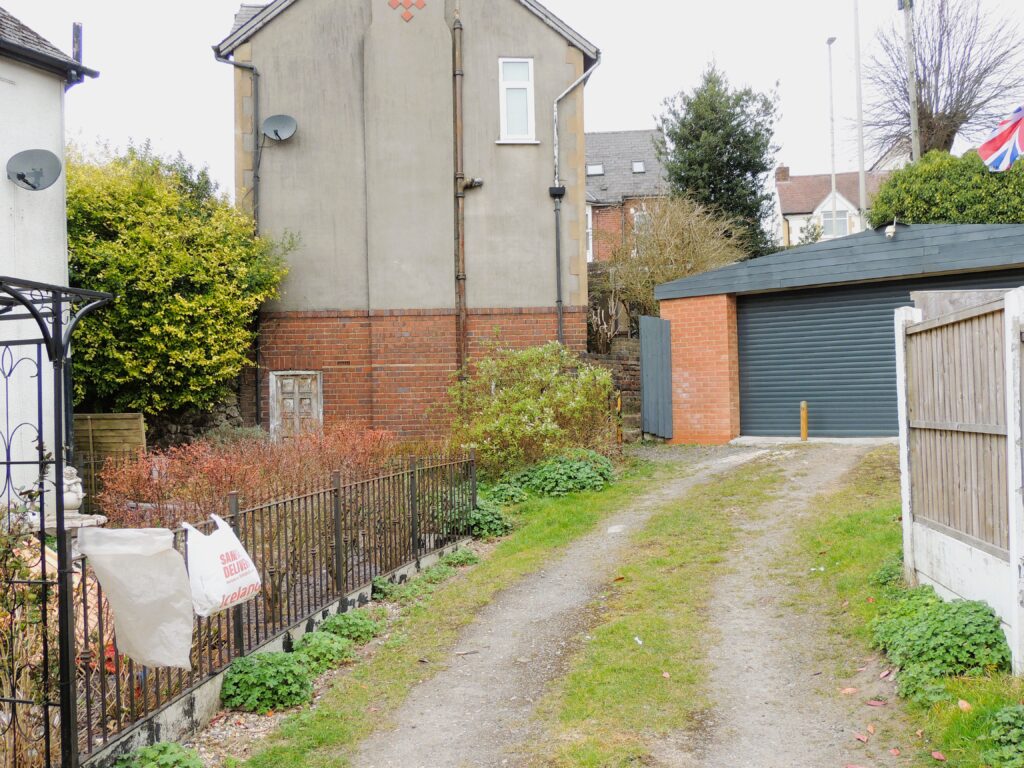
If you should have any memories, stories or photographs of Virgins End or the people who lived there, I would be delighted to hear from you. At present, I know of no existing photograph of Virgins End and it would be good to find this missing piece of the puzzle.


In 1911 you have John Head married to Sarah Byfield, I believe this was my great grandfather but Sarah was a pocock not Byfield. John and Sarah pocock had 9 children 7 died, mary jane and Nellie survived.
Thanks very much for reading my blog and for making the correction and information. I appreciate you taking the time to do this and will update the blog.
Erica
Many thanks for your reply. Very
interesting read. I’m researching my family tree and seen your blog ,was pleasantly surprised to see my family mentioned.
Again many thanks for your reply.
Phil